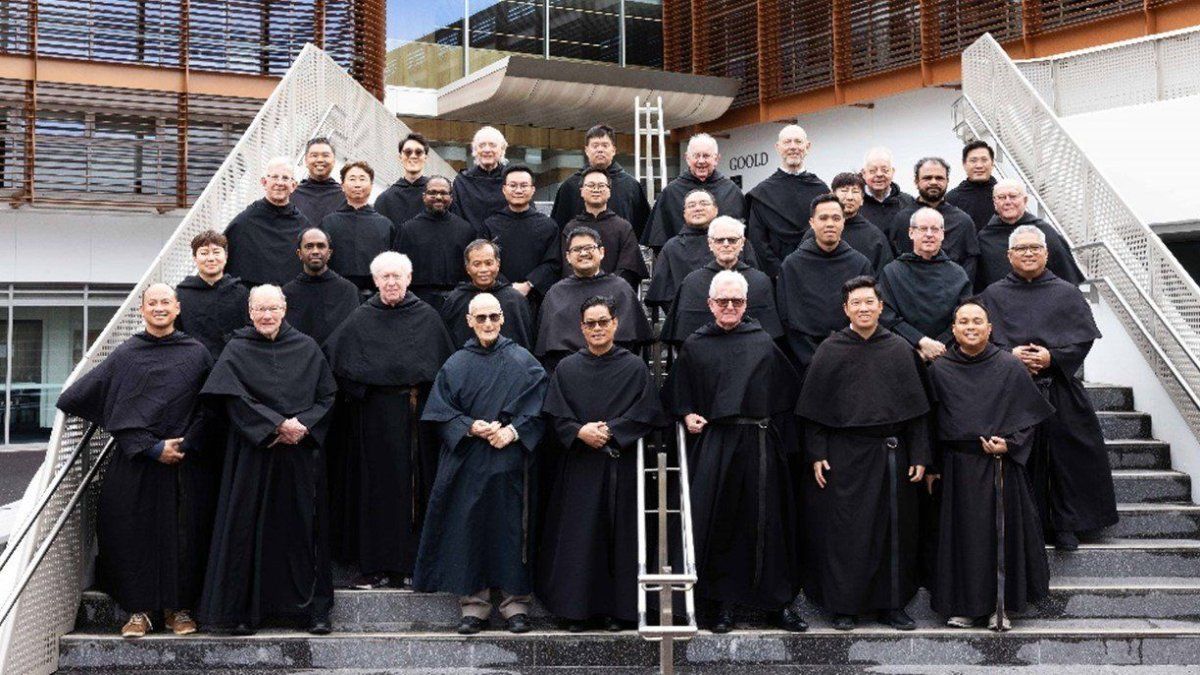Of American origin and with a solid missionary trajectory in Latin America, Prevost breaks with a usual practice of the Cardinal College, which historically favored secular clergymen or members of more visible orders such as the Jesuits or Franciscans. Your profile is deeply linked to Augustinian spiritualityfocused on community life, interiority and fraternal service.
Although there were potatoes that follow the branch of the OSA, in the history of the Catholic Church there were only two really Augustinian pontiffs: Alejandro IV (Founder) and Adriano VIthe last before the arrival of Leo XIV.
Papa-prevot.jpeg
Robert Prevost became the new leader of the Holy See, under the name of Leo XIV.
AP
The origin of the order of San Agustín
The Order of St. Augustine was not founded directly by its Homonymous Holy, but arose from the Fusion of eremitic communities in the Italy of the twelfth century. Spontaneous movements of pious laity, motivated by the desire for a life of poverty and prayer, found formal structure when Pope Innocent IV summoned them to unify under the same rule.
This union was completed in Rome in 1244, under the guidance of Cardinal Ricardo Annibaldi, and in 1256 it was extended by Alejandro IV, officially establishing the Hermite brothers of San Agustín as one of the four Mendicante orders recognized by the Church.
The expansion of the order was rapid: From Italy and the rest of Europe, it was projected to Africa, Asia and America during the processes of colonial evangelization. In the United States, his presence began in 1794 with the arrival of the friar John Rosseter to Philadelphia, followed by Matthew Carr, who founded the province of Santo Tomás de Villanova, nucleus of Augustinian growth in the northeast of the country. Later new provinces emerged in the west, California and Canada.
Formed in this context, Prevost was sent as a missionary to Chiclayo, in northern Peru, where he exercised as a pastor, trainer and bishop. Fully integrated into Latin American culture and challenges, was elected superior general of the Order and, in 2023, prefect of the dicas supplies for bishops, a key position in the Roman curia.
The San Agustín rule, written in the 5th century, is based on three pillars: Common life, inner search for God and fraternal charity. Unlike the monks, which remain in monasteries, or the diocesan clergy, linked to local parishes, the Augustinians lead an itinerant life, sustained by charity, combining contemplation and apostolic action.
The Augustinians are distinguished by their itinerant life, unlike the monks that remain in a single monastery, with a Simple and austere clothing, composed of a black robe, a leather belt and a layer or hood. This dress symbolizes your commitment to humility and povertyreflecting both his religious devotion and his vocation to live in community.
Today, the Augustinians develop a diverse apostolate, with a strong presence in education, urban pastoral, theology and social action. His ideal of “community in the middle of the world” continues to guide his mission, now with one of his at the head of the Universal Church.
Source: Ambito




